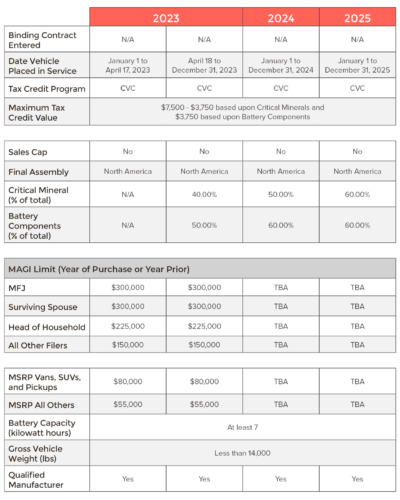State and Local Tax + Pass-Through Entities Elective Tax
The Tax Cuts and Jobs Act of 2017 capped the State and Local Tax (SALT) deduction at just $10,000 for individuals. Since then, many states with high individual income taxes have sought a workaround.
At the end of 2020, the IRS announced it would allow a federal deduction for pass-through entities (PTEs), which could elect to pay state taxes of the owners at the entity level. In response, 36 states, including Oregon and California, have since enacted a Pass-Through Entity Elective Tax (PEET).
The credit’s benefit is slightly more complicated for taxpayers with income from inside and outside states with PEET options. Further analysis will often be necessary to confirm the tax benefits.
How PEET Works in Oregon
Oregon’s law went into effect in 2022 and was renewed through 2025. Initially, it did not account for each entity’s estimated taxes to be paid during 2022. However, Senate Bill (SB) 1524, signed into law at the end of March 2022, now requires pass-through entities to pay estimated taxes for the Oregon PEET beginning June 15, 2022.
The actual election for the PEET occurs on a timely filed Oregon return (including extensions). If estimates are not paid by June 15, the election can still be made—the state will charge interest on the late payments. The election in Oregon includes all owners and can only be made if all owners are effectively individuals.
The ultimate result is that the entity makes a tax payment to Oregon and deducts such payment on their federal return, reducing taxable income. The owners get an Oregon tax credit for that amount and claim it on their personal returns. Any excess amount paid is fully refundable.
Aldrich Insights
The Oregon PEET may provide a tax benefit for owners receiving a K-1 from a pass-through entity, particularly if the PTE and all its owners are in Oregon. If a PTE has owners outside of Oregon, there is generally some benefit, but more analysis is required. Making the appropriate estimated tax payment before year-end allows for the most benefit.
How PEET Works in California
California’s PEET was made law under Assembly Bill 150 in 2021 and modified by SB 113. For the 2021 through 2025 taxable years, the law allows a qualified pass-through entity (PTE) to elect to pay PEET equal to 9.3% of its qualified net income. This tax decreases the federal net income included on the owners’ K-1.
The annual election for the PEET is made on a timely filed California return (including extensions). However, California requires the greater of $1,000 or 50% of the prior year’s PEET payment to be made by June 15 of the tax year to qualify for that year’s credit. Due to California disaster relief, the deadline to make the PEET estimate for the 2023 tax year has been extended to Nov. 16.
The election in California is on an owner-by-owner basis, allowing each owner to make their own decision. The credit in California is not refundable, so additional analysis is needed to confirm the benefits.
Aldrich Insights
Due to estimated tax payment requirements, California taxpayers needed to elect into the PEET effectively by June 15. Please work with your Aldrich Advisor to confirm what option is best for you in 2024 and plan now for the expected cash flow needs.
Oregon Kicker Tax Refund
will be able to claim their portion of a state revenue surplus, a $5.61 billion kicker for the 2023 tax year—the largest amount ever returned. The kicker will be returned to taxpayers as a credit on their 2023 tax returns filed in 2024.
For most taxpayers, this will increase the amount of their refund or decrease the amount of Oregon personal income tax they owe. The kicker is approximately 44% of the state personal income taxes Oregonians paid in 2022, about $980 for the median taxpayer:
| Income Group |
Adjusted Gross Income* |
Rough Estimate of Kicker Size** |
| Bottom 20% |
< $11,400 |
$60 |
| Second 20% |
$11,400 – $28,900 |
$440 |
| Middle 20% |
$28,900 – $52,400 |
$1,000 |
| Fourth 20% |
$52,400 – $96,200 |
$1,900 |
| Next 15% |
$96,200 – $201,300 |
$3,800 |
| Next 4% |
$201,300 – $466,700 |
$9,200 |
| Top 1% |
> $466,700 |
$44,600 |
| Average |
$69,400 |
$2,100 |
| Median |
$35 – 40,000 |
$980 |
* Based on 2020 actual tax returns
** Based on 2020 actual tax returns, PIT kicker amount ($5.6 billion) and the Oregon Office of Economic Analysis’s forecast tax liability
slide 15
Oregon’s unique kicker law requires the state to return revenue to taxpayers when the amount collected exceeds forecasts by more than 2%. These payouts come after each two-year budget cycle in the form of a credit.
Aldrich Insights
Under Oregon’s progressive tax system, high-income earners pay more in taxes—and will thus receive a substantially higher refund. We recommend working with your Advisor to understand how the kicker credit affects your personal tax situation.
Paid Leave Oregon
On Sept. 3, 2023, Oregon’s paid family leave law went into effect, allowing eligible employees to take up to 12 weeks for family, medical, or safe leave. The program is funded through employer and employee contributions—up to 1% of an employee’s total gross wages and capped at $797.40 in 2023.
Employers with more than 25 employees pay 0.4%, and employees pay 0.6% of the contribution. However, employers may pay some or all of the employee portion as a benefit. Employers with fewer than 25 employees are not required to contribute, but still must collect and submit employee contributions.
Aldrich Insights
Most Oregon workers who made at least $1,000 in gross wages during the base year, or alternate base year, could be eligible. Employees apply for paid leave and file claims with either Paid Leave Oregon via Frances Online or with the administrator of their employer’s equivalent plan.
The state or private insurer—not the employer—then pays the benefit directly to the employee if their leave is approved. The table below provides an example of contributions and benefits based on an employee’s weekly earnings.
Example of Payroll Contributions
State Average Weekly Wage for 2023-24: $1,269.69
|
Annual Earnings (Weekly Earnings) |
Annual Employee Paid Leave Contributions |
Annual Employer Paid Leave Contributions |
One Week’s Paid Leave Benefits |
| Minimum-wage Employee |
$28,080
($540) |
$168.48 |
$112.32 |
$540 |
| Median-income Employee |
$67,058
($1,289.58) |
$402.35 |
$268.23 |
$1,057.44 |
| High-income Employee |
$132,900 or more
($2,555.78 or more) |
$797.40 |
$531.60 |
$1,523.63 |
- Minimum Weekly Benefit Amount: $63.48
- Maximum Weekly Benefit Amount: $1,523.63
Source: Paid Leave Oregon
Employees can use this calculator to estimate their contributions but should check with their employer’s HR or benefits team for the actual amount of their paycheck deductions and for eligibility.
Washington Capital Gains Tax
In April 2021, the Washington State lawmakers passed a state capital gains tax for individuals with Washington-allocated gains. This 7% tax is charged on long-term investments above $250,000, the proceeds to fund the state’s education legacy trust and common school trust accounts.
In March 2022, Douglas County Superior Court Judge Brian Huber struck down Washington’s new capital gains tax. While supporters characterized it as an excise tax, critics called it an income tax that violated the state’s constitution.
However, in March 2023, the Washington State Supreme Court ruled the excise tax constitutional, allowing the Department of Revenue (DOR) to continue collecting the tax. The first payments for the tax year 2022 were due on or before April 18, 2023.
While short-term capital gains and ordinary income are excluded, most gains from long-term investments are subject to the 7% tax. Gains from certain assets are exempt, including depreciable assets used in a trade or business, retirement account assets, real estate, livestock sales, and timber.
Taxpayers may also deduct long-term gains from the sale of qualified family-owned small businesses. Most tax filers can deduct $250,000 of long-term capital gains before calculating their tax liability. Married couples filing separately are the only type of filer limited to a $125,000 deduction. (Thus, a single taxpayer will still have a $250,000 deduction.) Taxpayers can also receive a deduction with a charitable donation of up to $100,000 to certain charities.
Aldrich Insights
Capital gains taxes can be minimized with proper planning. Consider tax-loss harvesting by selling unprofitable investments at a loss to offset or reduce capital gains, and smoothing out capital gains over a few years so that no year has over the $250,000 gain.



